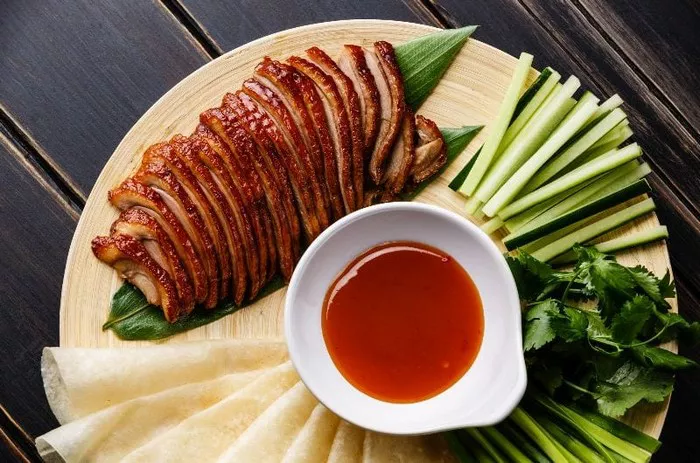China plays a significant role in the global food supply chain. As one of the largest agricultural producers and exporters in the world, China sends many food products to the United States. These range from raw materials to processed items, and they cover a wide spectrum of categories including fruits, vegetables, seafood, grains, and more. In this article, we will explore the various foods that come from China to the United States.
Fruits and Vegetables
China is a major supplier of fruits and vegetables that are consumed in the U.S. These include both fresh and processed options.
Frozen Fruits
Frozen fruits from China are a common item found in American supermarkets. These include products such as frozen strawberries, peaches, and mixed berries. Many of these fruits are grown in China’s abundant agricultural regions and then frozen for export.
Frozen Vegetables
Frozen vegetables such as peas, corn, and green beans also come from China. These vegetables are often harvested and frozen at the peak of freshness, which helps them retain their nutrients during transportation. Chinese farms have large-scale operations to meet the demand for frozen vegetables worldwide, and the U.S. is a key market for these products.
Canned Vegetables
In addition to frozen vegetables, canned vegetables from China are widely available in American stores. Common examples include bamboo shoots, water chestnuts, and mushrooms. These canned vegetables are often used in Asian cuisine, such as stir-fries and soups, which are popular in many American households.
Seafood
China is a leading producer of seafood and exports a wide variety of products to the United States.
Shrimp
One of the most significant imports from China to the U.S. is shrimp. China has extensive shrimp farming operations along its coastal regions. Much of the shrimp exported to the U.S. is farmed, although some wild-caught shrimp also come from Chinese waters. Shrimp from China is typically sold in various forms: raw, cooked, peeled, or frozen.
Fish
Fish from China, including tilapia, catfish, and other farmed species, is commonly imported into the United States. Tilapia, in particular, has become very popular in American kitchens due to its mild flavor and affordable price. China’s fish farming industry is the largest in the world, and the U.S. is one of its largest customers.
Other Seafood
Aside from shrimp and fish, other types of seafood, such as crabs, clams, and mussels, are also imported from China. These products are often sold frozen and are used in various seafood dishes, from crab cakes to chowders. China’s ability to farm and process seafood on a large scale allows them to be a dominant player in the U.S. seafood market.
Grains and Legumes
China is a major producer of various grains and legumes, many of which are exported to the U.S. for use in food production and consumption.
Rice
China is one of the largest producers of rice in the world, and a significant portion of that rice is exported to the United States. Although the U.S. also grows rice, China’s rice industry is vast, producing different varieties, including white, brown, and specialty rices like jasmine and basmati. This rice is often used in Asian cuisine and is a staple in many American households.
Soybeans
China is both a producer and importer of soybeans. While the U.S. is a major exporter of soybeans to China, the reverse is also true. Chinese soybeans are often used to make various soy-based products like tofu, soy milk, and soy sauce, which are essential ingredients in many American kitchens.
Legumes
In addition to soybeans, other legumes such as mung beans and lentils are commonly imported from China. These legumes are used in soups, stir-fries, and even desserts in both traditional Chinese dishes and fusion cuisine.
Snacks and Processed Foods
China has become a large supplier of processed foods and snacks that are sold in the U.S. Many of these products cater to the growing interest in Asian-inspired flavors, while others offer traditional Chinese snacks.
Snack Foods
Popular Chinese snack foods that have found their way into American supermarkets include items like sesame seed bars, dried fruit, and roasted nuts. These snacks are often made with unique spices and seasonings, giving them distinct flavors. For example, dried lychee, a tropical fruit, is a popular snack in China and has gained popularity in the U.S. market.
Sauces and Condiments
Chinese sauces and condiments, such as soy sauce, hoisin sauce, oyster sauce, and chili paste, are widely used in American cooking, particularly in Asian-inspired dishes. These products are typically manufactured in China and exported to the U.S., where they form the base of many recipes.
Instant Noodles
One of the most popular processed foods imported from China is instant noodles. These are quick and easy to prepare, making them a staple in many American homes, especially among busy individuals and college students. Chinese brands like Nongshim and Jin Ramen are well-known in the U.S. market.
Beverages
China is also a major exporter of beverages to the United States, particularly tea.
Tea
Chinese tea is perhaps one of the most popular food-related imports from China. The U.S. imports large quantities of various types of tea from China, including green tea, black tea, and oolong tea. Green tea, in particular, has gained popularity due to its potential health benefits. Chinese tea is sold in many forms, from loose-leaf to tea bags, and is consumed by millions of Americans every day.
Fruit Juices
China also exports fruit juices to the United States, including juices made from tropical fruits like lychee and mango. These juices are often found in supermarkets and are used to create refreshing beverages or mixed into smoothies.
Spices and Herbs
Chinese cuisine is known for its complex flavors, often enhanced by a variety of spices and herbs. Many of these ingredients are imported into the U.S. to meet the demand for authentic Chinese cooking.
Chinese Five-Spice Powder
Chinese five-spice powder, a blend of cinnamon, star anise, cloves, fennel seeds, and Sichuan peppercorns, is a common ingredient used in Chinese cooking. It is widely available in U.S. grocery stores, especially in Asian markets. This spice blend is often used to flavor meats, vegetables, and even some desserts.
Ginger and Garlic
Ginger and garlic are two essential ingredients in Chinese cuisine that are also heavily imported from China to the U.S. While both ginger and garlic are grown in the U.S., China is one of the leading exporters of these ingredients, especially in their dried or processed forms.
Dried Mushrooms
Dried mushrooms, particularly shiitake mushrooms, are a common product that comes from China. These mushrooms are used in a variety of Chinese dishes and are known for their earthy flavor. Dried shiitake mushrooms are often rehydrated before use in soups, stews, and stir-fries.
Specialty Foods
There are also specialty foods that come from China to the U.S., typically found in Asian grocery stores or specialty food markets. These items cater to consumers seeking authentic Chinese ingredients for specific recipes or traditional dishes.
Tofu and Tempeh
Tofu, made from soybeans, is a staple in Chinese cuisine and is frequently exported to the United States. It is used in a variety of dishes, from stir-fries to soups. In addition to tofu, tempeh, a fermented soy product, is also available in the U.S. and is increasingly popular as a meat alternative in vegetarian and vegan diets.
Chinese Pickles and Preserved Foods
Chinese pickles, such as pickled mustard greens and pickled radishes, are often found in U.S. stores that specialize in Chinese food products. These pickles are usually used as condiments or side dishes in Chinese meals. Similarly, preserved foods like dried tofu and salted fish are popular ingredients in traditional Chinese recipes.
Conclusion
The United States imports a wide variety of food products from China, ranging from fresh fruits and vegetables to processed snacks, seafood, and specialty ingredients. These foods help cater to the growing demand for Asian-inspired cuisine and provide American consumers with diverse and unique flavors. While the U.S. imports many food products from China, it is important for both countries to work together to ensure food safety and quality standards are met to benefit consumers worldwide. The global food supply chain is complex, and China continues to be a major player in providing the U.S. with a wide range of food options for different culinary needs.
Related topics:






















